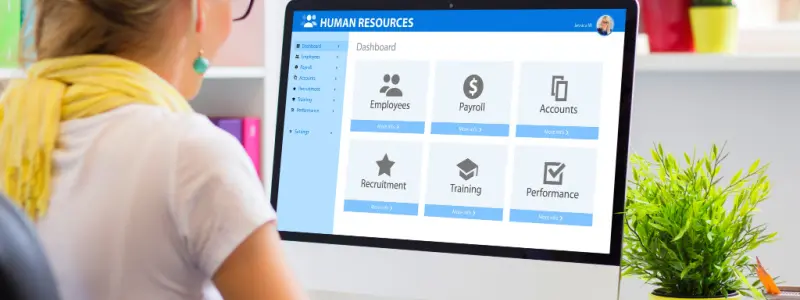Although it has been months since the implementation of Single Touch Payroll Phase 2, many businesses that use Xero have only recently become aware of it. The deadline for Single Touch Payroll (STP) Phase 2 was originally set for January 1, 2022. Xero, one of the largest small business payroll providers, has been granted a 12-month extension until January 1, 2023.
What exactly is Single Touch Payroll?
Businesses were required to begin reporting certain information to the ATO a few years ago. Gross pay, allowances, superannuation, and tax withheld were all included. This was a huge leap at the time, and it was most likely the biggest change in payroll reporting in Australia’s history. The fact that the ATO knows exactly what each and every worker in Australia is paid in real-time is enormous.
What is Phase 2 of Single Touch Payroll?
Essentially Single Touch Payroll Phase 2 gives the ATO more information in your regular STP lodgement. Employers will need to take extra care in their payroll lodgments to ensure that each employee’s pay is correctly broken down. According to the ATO website, STP2 “will reduce the reporting burden for employers who must report information about their employees to multiple government agencies.” This statement may be correct, but will undoubtedly increase the reporting burden for all businesses in terms of payroll reporting.
Here you’ll see what information will be added to reporting in Single Touch Payroll Phase 2.
Income Types
Your payroll software should break down the income types which need to be taxed differently. There will be a code used to differentiate what category of payment you are receiving. A few examples of these are:
- SAW (salary and wages): This is the standard that captures the bulk of employees
- CHP (closely-held payees): This covers some small business-related payees who have certain exemptions that allow them to lodge once per quarter instead of every pay run.
- WHM (working holiday makers): This covers workers under 417 or 462 visas.
Disaggregation of Gross
As mentioned above, businesses are already providing the gross payment in their regular STP lodgement. The first part of Single Touch Payroll Phase 2 will be breaking up this gross payment and the ATO have labeled this the ‘disaggregation of gross’. Once you have setup your payroll accordingly the ATO will be receiving the following:
- Gross
- Paid Leave
- Allowances
- Bonuses and commissions
- Directors fees
- Lump sum
- Salary Sacrifice
Employment Taxing Conditions
Previously you would keep records when commencing and ending an employee’s engagement. The most obvious change is that previously you would lodge a ‘TFN declaration’ (generally electronically) to the ATO. Instead of doing this as a separate task this will be sent within the STP2 information. You will still need to get the employee to fill one of these in when you employ them however it will not need to be lodged separately.
Information for Single Touch Payroll Phase 2 includes:
- Employment basis, i.e. casual, part-time, permanent
- What withholding is required for each employee, e.g. tax-free threshold, HECS/HELP and Student loans.
- Details of when and why an employee leaves
What to do to comply with Phase 2 of Single Touch Payroll?
Your payroll digital service provider will determine how this works. Some employers are already using Single Touch Payroll Phase 2 to report payroll information, but many of the businesses that work with Xero are encountering this for the first time. For those who book payroll through Xero, you have until December 31, 2022, to update your pay items and verify your payroll configuration in order to be in compliance with STP2. As usual, Xero has done a good job of making an effort to streamline this procedure, and once you enter the Single Touch Payroll section of the menu, you can access the STP2 menu and proceed as usual.
The next step is to update the pay items after updating the employees. This is a component of the “disaggregation of gross,” as was previously mentioned. Every employee is covered by an award, and most employers should check the award when setting up their staff members to ensure they are receiving the minimum wage. The issue is that most employers don’t typically break down the components of that pay, which could be problematic for most businesses that handle their own payroll.
Small business owners typically don’t have a payroll department, and while they may check that they are paying the minimum wage, they frequently just set their own and their employees’ pay at a higher level than the minimum wage so that there won’t have to be frequent adjustments.
Single Touch Payroll continues to put a focus on the Super Guarantee
Making sure that super is paid on the appropriate pay items is one of the fundamental compliance goals of single-touch payroll, and the ATO will continue to keep an eye on super payments and reported wages to make sure that employers are paying the appropriate amounts of super.
Because super guarantee is not paid on overtime, employers will need to carefully consider and correctly classify overtime and overtime allowances. Make sure the overtime is compliant with your employer’s requirements.
When to get professional assistance?
Here, there are primarily two problems that need to be resolved:
- The human resource (HR) component is the first. If you are unsure of how to interpret your employee awards, you might need help from a professional in human resources. There are more HR service options available now, which might be another reason to move away from self-managing your HR. The good news is that there are now affordable options available for the majority of employers, and they can get some legal advice under an affordable subscription.
- Once you are aware of your award and minimum pay, the next step is to double-check your reporting. Your bookkeeper and accountant can help with this. Many of the companies we see are aware that they are paying the right rates, but they still need to check that their payroll provider has set them up properly.
If you need assistance updating your payroll reporting from a qualified professional, feel free to contact Fullstack.
















